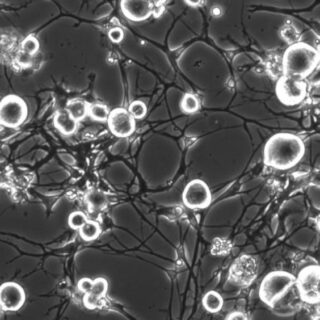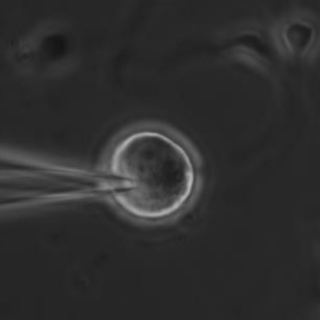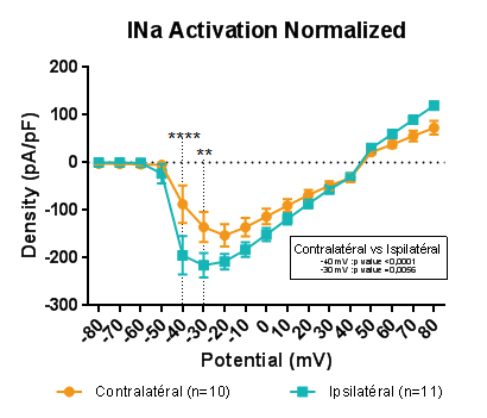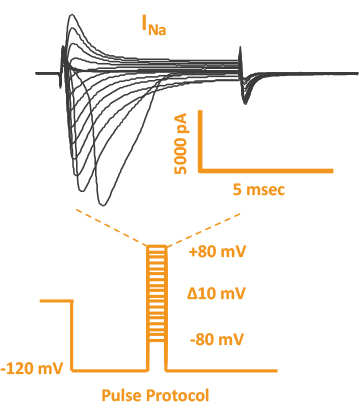DRG Sensory Neuron Cultures
RODENT DRG SENSORY NEURON CULTURES FOR PAIN DRUG DISCOVERY
Dorsal Root Ganglia is composed of paired ganglia made of sensory neurons, which are the main vector conveying information from the external environment to the spinal cord.
Investigation on Dorsal Root Ganglia sensory neurons is essential in determining mechanism underlying Pain sensation.

We use whole-cell patch clamp recordings on rodent DRG sensory neurons to assess compounds targeting membrane proteins in the context of Pain preclinical drug discovery.
In addition, we can record DRG neurons from neuropathic rodents to address compound properties specifically developed for neuropathic pains.

PROTOCOLS AVAILABLE
PATCH CLAMP
Passive membrane properties
– Input resistance
– Membrane capacitance
– Access resistance
– Resting Membrane Potential (RMP)
Passive membrane properties
– Input resistance
– Membrane capacitance
– Access resistance
– Resting Membrane Potential (RMP)
PATCH CLAMP
Active membrane properties
– Rheobase
– Spike threshold
– Spike Amplitude
– Firing frequency
– Voltage-gated ion channels
– Ligand gated ion channels
– GPCR modultation
Active membrane properties
– Rheobase
– Spike threshold
– Spike Amplitude
– Firing frequency
– Voltage-gated ion channels
– Ligand gated ion channels
– GPCR modultation
PATCH CLAMP
Synaptic transmission and plasticity
– Evoked responses
– Miniature currents
– Spontaneous currents
CALCIUM IMAGING
– Firing activity on small neuronal subpopulation
– Capsaicin-induced firing activity
Synaptic transmission and plasticity
– Evoked responses
– Miniature currents
– Spontaneous currents
CALCIUM IMAGING
– Firing activity on small neuronal subpopulation
– Capsaicin-induced firing activity
MULTI ELECTRODE ARRAY & HD MEA
– Spontaneous firing activity
– Capsaicin-induced firing activity
– Short term synaptic plasticity
– Long term synaptic plasticity
– Spontaneous firing activity
– Capsaicin-induced firing activity
– Short term synaptic plasticity
– Long term synaptic plasticity
ASSES YOUR COMPOUND’S EFFECTS ON ION CHANNELS



